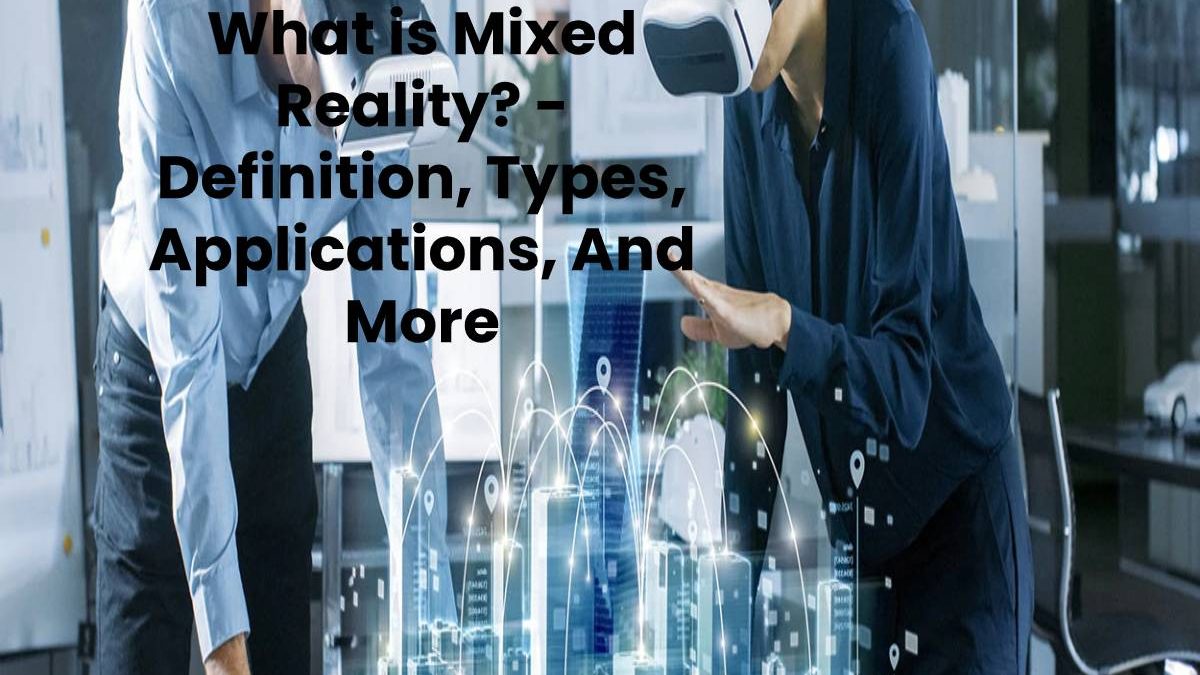Table of Contents
Definition Mixed Reality (MR)
Mixed reality is the integration of real and virtual worlds to produce new visualizations, where physical and digital objects co-exist and interact in real-time.
The idea of mixed reality is to create a technology that is a mixture of virtual reality and augmented reality.
What is Virtual Reality and Augmented Reality?
Virtual reality implies the creation of an alternative reality that gets accessed through a device that isolates the user from their physical environment. Meanwhile, augmented reality involves visualization, through a screen, objects, or other layers of information to the physical world in which we live.
The fusion of the physical world with the digital world ix mixed reality.
How does Mixed Reality work?
In mixed reality, it is about bringing the real world to the virtual world. The idea is to generate a 3D model of reality and overlap its virtual information. In this way, both realities can get combined to add additional content of value to the Mixed Reality user.
Getting this real-world translation to a virtual 3D model is one of the main challenges of this technology. One of the methods to achieve the fusion of both worlds and form a shared space is the one used in Google, Tango Project. This method consists of scanning the space in real-time to be able to get the mix of the real 3D model with the virtual one. In the following video, we can see how this technology works in detail.
Potential applications of Mixed Reality
The variety of applications and sectors in which Mixed Reality can be useful is very diverse and promising. Some of the examples that the leading developers of this technology are showing are:
- The disappearance of fixed or restricted screens to a size to consume content.
- Prototyping
- Presentation of interior projects on-site
- On-site technical training
At present, we could mention three companies that are betting strongly on the mixed reality: Microsoft, Magic Leap, and Meta Vision.
Microsoft has been working for a long time in the field of hardware and software essential to take benefit of the use of Mixed Reality on a day-to-day basis. Your Hololens glasses project and Windows Mixed Reality are suitable proof of that.
Another essential agent in Mixed Reality is Magic Leap. The arrival of its smart glasses is a revolution for this technology. The Magic Leap One will have a technological breakthrough that will provide a better sense of fusion between the physical and virtual worlds: the field of light technology.
This advance will allow projecting a complete 3D image so that the focus retina in the same way as a real object achieving greater realism.
Finally, Meta Vision is betting on bringing [mixed reality] to the end-user through the commercialization of a more economical device.
Glasses and current [mixed reality] devices
Today we have three models of mixed reality devices
Microsoft Hololens
This is the new Microsoft device recently launched. And on which the technology giant intends to focus all its strategies to market mixed reality.
Goal 2
Meta Vision glasses are much cheaper and allow the mixture to be usable to the general public.
Daqri Smart Helmet
The Daqri company offers [mixed reality] developers a helmet-shaped device. It allows 120º vision and weighs only 1 Kg.
Their prices range from $ 495 of the Goal 2 to $ 15,000 of the Daqri helmet. At the moment, the cost of these devices is well above that of the virtual reality glasses for smartphones that we can currently buy.
How to learn to develop Mixed Reality?
Although the paradigm of [mixed reality] is different from that of virtual reality and augmented reality. The current methodologies used to create experiences in virtual and augmented reality will serve to develop applications and skills of [mixed reality] in the future. You will have to work with the specific development kit for each of the new devices but using current video game engines such as Unreal Engine or Unity.
A current expert in modeling and creating VR applications will be able to master the development of [mixed reality]. Therefore, training in the creation of virtual reality / augmented reality experiences today will help you to develop [mixed reality] in the future.

